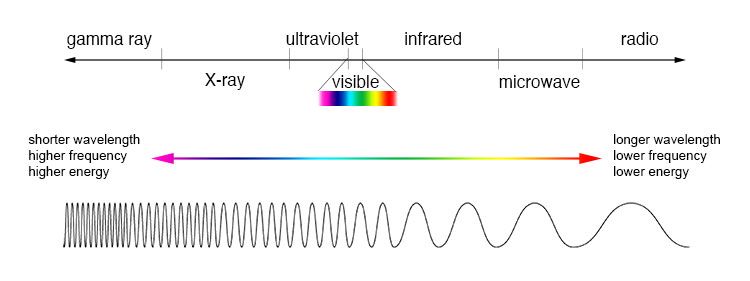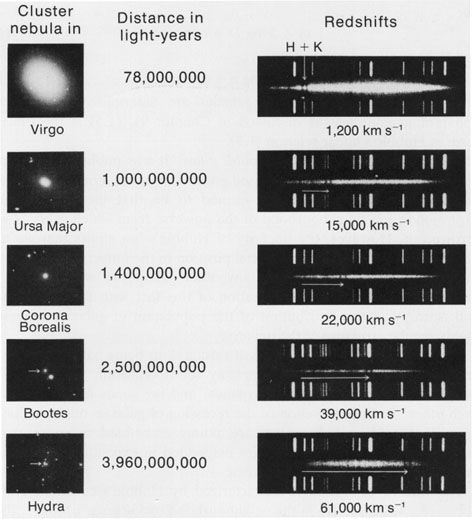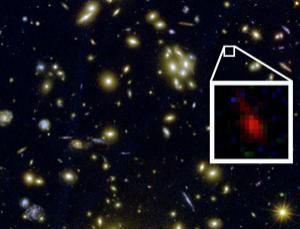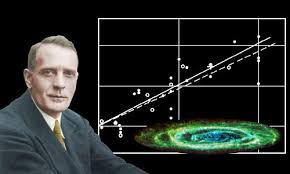Red Shift
Red Shift
Red shift refers to the method that astronomers use to determine the distance to objects at the limit of the observable universe.
Red shift is the phenomenon that occurs when astronomers observe galaxies that are very far away. Edwin Hubble discovered this effect and it led to the idea that the universe is expanding. Red shift refers to the fact that the color of these far flung galaxies look red. This is because the light that comes from them is shifted to the red end of the spectrum because of the Doppler effect. This effect is a feature of all waves, both electromagnetic and sound. For example, the Doppler effect is responsible for the change in the sound of a train whistle as it approaches and then retreats, at which time the sound is shifted to a longer wavelength as it recedes into the distance.

Red shift is used to designate the distance to far-flung galaxies. The further into the red that the light from a galaxy is shifted, the further away it is.

This expansion of the universe is actually the expansion of space itself, not the moving of galaxies away from us. This may sound strange but it follows that the expansion of the universe is a cosmological event, not a local event. The effect of expansion is undetectable, or very slight, within our local group of galaxies. This is only practical for galaxies that are hundreds of millions of light years away. In other words the expansion is not going to tear our atoms apart or send the stars into la, la land.

The measurement of red shift is designated z, which is a change in the wavelength in the visible light spectrum of a celestial object that's moving relative to an Earth observer. Small z numbers mean that the object is not receding fast, whereas a larger z number means that it is. On the other hand, negative z means that a galaxy is moving towards us.
There is a plot that shows the relationship between the red shift z and the distance in giga-light years or parsecs. Most astronomers simply designate the distance in red shift z, and sometimes they give the red shift as a velocity. For example, NGC-584 is an elliptical galaxy in the constellation Cetus. This is listed as z=0.006 or 1800 km/ sec. LEDA 25177 is a galaxy in the Hydra Supercluster and it's listed as z=0.2 and a velocity of 61,000 km/ sec. As you can see the larger z number is indicative of a much faster velocity of recession. HMC-6A is listed with a z=6.56. This galaxy is in the cluster Abell 370 and is the first galaxy discovered to have a red shift above 6. There are galaxies with z numbers of 7, which means that the light is arriving here after 13 + billion years.

So, this shows how astronomers deal with objects at extreme distances. There is no other way to determine these extreme distances other than red shift. The usual method of determining the distance to nearby galaxies is to hunt for Type-1A supernovae in the galaxy, which always have the same brightness. This allows the brightness of the supernova to be used as a standard candle. Unfortunately, seeing a supernova in a distant galaxy is currently beyond astronomical science.

We can thank Edwin Hubble for this red shift idea of determining distances to galaxies. He didn't invent red shift, but he used it to establish that the universe was actually expanding and space further away was expanding even faster. We still don't know why this is happening, but at least it gives astronomers a way to determine distances to far-flung galaxies. This is yet another way in which scientists do almost impossible things.
Thanks for reading.
Bạn đang đọc truyện trên: Truyen247.Pro